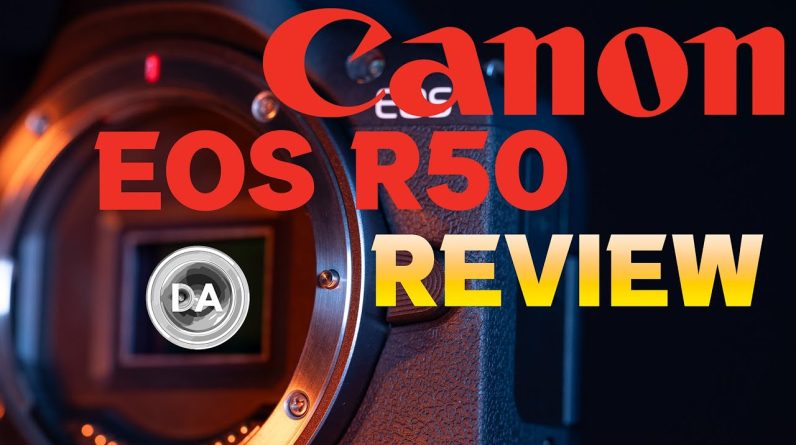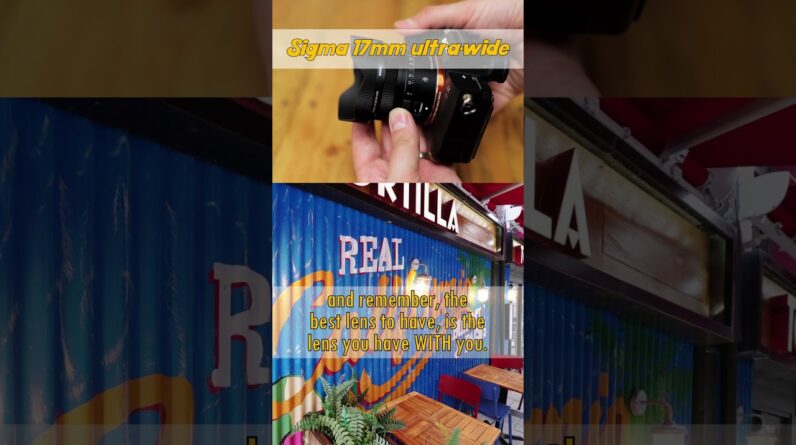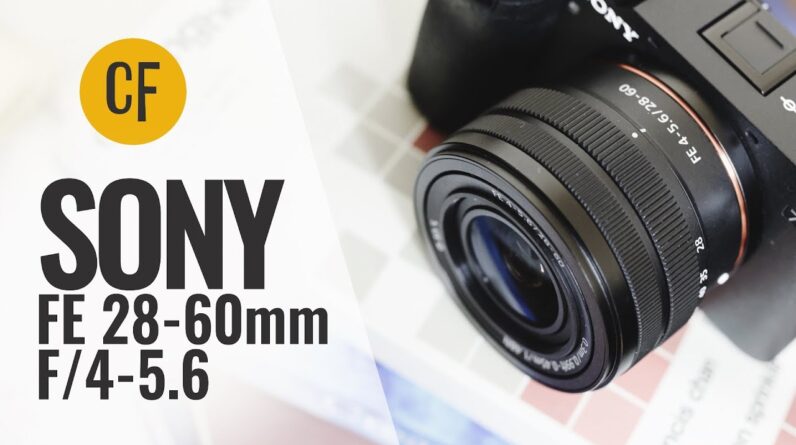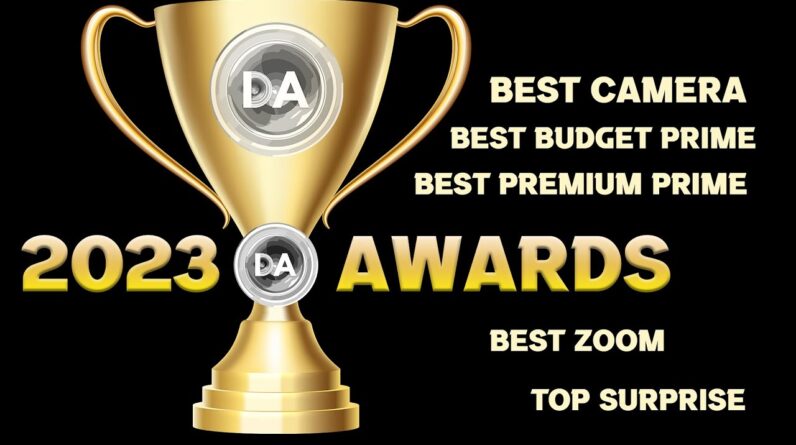[Music] Foreign Review of the new Sigma 17 millimeter F4 Dgdn lens this is part of their I series The latest entry in the I series and it Is an incredibly small wide angle option That manages to deliver highly detailed Images despite the compact size the Great challenge here is that this tiny Lens retails for about 600 US Dollars Which is going to raise the question is It worth the cash well find out after a Word from our sponsor today Today's episode is brought to you by Into the am a clothing brand from Southern California that wants to outfit Your passion whatever it might be their Everyday comfortable fabrics and Designs Are great whether you are working from Home working out or even just chilling Out I love the fit and fabric on their Everyday t-shirts and you can choose More funky Styles created in Collaboration with local artists like This killer fractured King hoodie use The code Dustin tin or follow the link In the description to get 10 off Site-wide including their monthly T-shirt Club visit into the am.com Forward slash dustin10 for more Information So far sigma's I Series has branched out Into two kind of distinct lines one of Those being the lenses with a maximum
Aperture of F2 which are slightly larger Very good optically typically and then There is some really small options that We have seen thus far a 24 millimeter F 3.5 a 45 millimeter F 2.8 and a 90 Millimeter F 2.8 and then this lens a 17 Millimeter F4 now while it has the Smallest maximum aperture of any lens And I Series so far it also has by far The widest angle of view it's 103.7 Degree angle of view which is quite wide But this lens isn't small like you say Canon 16 millimeter F 2.8 STM it's not a Plastic Fantastic this is a really Premium lens it has a really beautiful Build quality and overall aesthetic to It it just happens to be really really Small it's only 64 millimeters in Diameter with a 55 millimeter front Filter thread it's right under 51 Millimeters in length so think 2.5 Inches by only two inches in length and It weighs in at 220 grams or 7.8 ounces The fact that the way the weight of it Is so light tells you how small the lens Is because this is a as noted a premium Build it's all metal construction here Up to and including the lens Hood the Lens hood is really really beautifully Crafted and I love the fact that when it Is mounted all of the vertical lines on Here the ribs on here all line up and it Just looks like the Blends hood is an Extension of the lens design rather than
Some you know tacked on plastic piece That looks like an afterthought As has been typical for this series we Do have an aperture ring and so one Third stop detents and marks at the full Aperture stops there is no d-click Option here and outside of the AFM MF Switch on the side there are also no Further features no Focus hold button or Anything like that I will note that While some of the lenses in the series Have a kind of transversely mounted afmf Switch this one doesn't and frankly I Wish that it did mostly because it is so Small and because the aperture ring is Raised there is very little space just a Couple of millimeters between the Aperture ring and then that switch and So I find that it's just a little bit Difficult to to feel it and get my Finger in on there and so if it's hard To do with my bare hands I can only Imagine trying to do it with gloves in The winter so you know obviously I think It would have worked better if it had Been oriented in the other direction It's not so that's neither here nor There there is a gasket at the rear of The lens however as has been typical for The I series The only weather ceiling is The gasket itself there are no internal Seals no you know flooring type coating On the front and so it's it's a very Basic weather sealing that is engaged
We have a very very nice manual focus Ring now again there's not a lot of Distance between the manual focus ring And the lens Hood part of the byproduct Of such a very small design however There is really really quality damping To the focus ring to where it actually Feels like it has some weight to it and Feels more precise in Focus two Different caps as is typical for the I Series it leverages the fact that Everything is metal one of those caps is Magnetic it works fine if you don't have The lens hood on if you do there's not a Lot of room in there to get a you have To almost use a fingernail to pry it up And so I find the pinch cap just more Straightforward even if it doesn't feel Maybe as premium as what the metal cap Does seven rounded aperture blades Inside As far as keeping a circular shape it Does a reasonable job but as you can see The geometry is never really all that Exceptional we'll explain a little bit Why in the breakdown of the image Quality in just a moment one final thing To note about the build and the handling Is that the minimum Focus distance is Only 12 centimeters now from the sensor To the front of the lens hood is over Nine centimeters so you're almost on top Of your subject by that you're going to Want to remove the lens Hood if you're
Going to try to operate at the minimum Focus distance but there you do have a Very reasonable 0.28 almost 0.28 times Magnification which is really useful Though as we'll see in the IQ breakdown It does take a little bit of a Deft hand To make sure that you get images that Look good as a byproduct because you're So close and there is some Distortion in The lens itself Now autofocus here comes from an STM or Stepping Focus motor that's typical Throughout the I series and frankly this Is probably the least challenging lens In the series it has the smallest Maximum aperture it has the widest focal Length as a byproduct that means that a Lot is going to be in Focus most of the Time and so the focus motor is not Overly taxed elements are not big and it Doesn't have to do a lot of major Focus Changes so as a byproduct I mean Autofocus is Snappy it's quiet no issues There at all in fact I found that it Actually worked just fine for sports Even though once again there's probably Not a whole lot of focus change taking Place but at the same time seem to have No problem keeping up with the action in A pickup basketball game there also file And and just shooting images of Nala With her moving towards the camera which Can be difficult that it grabbed her eye And as long as I had my shutter speed up
High enough which takes a little bit More work with an F4 maximum aperture But as long as I did that I was able to Get nicely focused results no issues There I also had good eye stickiness on my eye From my hand test and as you can see Once my hand was all the way it very Quickly and smoothly returned to the eye And furthermore when I did my focus Pulls test Focus pulls are nice smooth They're not abrupt but they are fast Because again there's not a major amount Of focus change that is taking place and As a fringe benefit there's next to no Focus breathing that is taking place There either which is always useful Because these third-party lenses are not Going to be compatible with Sony's Focus Breathing compensation but in this case It's not really needed I will note that This Lin sells not only in a Sony email But also a Leica L Mount and some of the Limitations that are on Sony don't exist On Leica for the simple reason that on Leica Sigma is actually one of the the Parties kind of first parties in that Consortium and so it technically is a First party lens there so not there's no Limitations that are imposed on it like There are and Sony the other limitation Potential limitation is the fact that on The sports bodies maximum burst rate is Going to be 15 frames per second as it
Is with all of uh all third party lenses And so you won't be able to get either 20 frames per second on the A9 series or 30 frames per second on the Alpha One Probably not a huge deal for most people In most situations I will also note that there was good Overall Focus speed and precision Throughout my test I have no complaints About autofocus And when it comes to image quality for Such a tiny optic while there are a few Flaws as we're going to see overall this Is a very strong performer it is a very Sharp lens and so let's dive in and much Like the 24 millimeter F 3.5 I wasn't Excited by an F 3.5 aperture I'm not Particularly excited by an F4 aperture Though it's a little easier to swallow In a wide angle lens like this but as We're going to see you've got plenty of Sharpness on tap even from wide open at F4 let's dive in let's take a look so First off we'll take a look at vignette And Distortion I had a fear with such a Small lens that Distortion would be an Issue along with vignette and certainly That is the case here though I do want To put it in some context so as we can See there is some strong Barrel Distortion when I did a manual Correction and I'll show you those stats In just a moment you can see that There's a little bit of a mustache
Pattern that is left behind so not a Perfect correction we'll take a quick Look at those numbers so to achieve the Degree of correction that I did I dialed In a plus 12 for the Distortion which You can see that's flattened it out on The corners there's still that bulge in The center what happens if you go Further with that correction as you'll See I start to turn to some pin cushion Distortion except for then it flattens Out in the middle and so it's just uh You know it's not a linear type Distortion so it's just it's really kind Of hard to dial in something perfect There vignette is a plus 78 and so about Three stops so you know heavy for sure Though not off the charts heavy so Without any kind of vignette correction What you'll end up with is you know a Fairly heavy kind of focus in towards The center of the image because that Vignette is strong in the corners but it Is pretty linear so it moves out quite a Ways so in an image like this this is a Look and so either you're you know it Might work in some images in this Particular one I think that it does work But in other situations it's obviously Not going to work at all and so if you Had a lot of for example snow here in The foreground you really don't want a Lot of darkening there but you know this Kind of vignette sometimes can achieve a
Certain look that people like but in Many cases you're going to want to have It corrected so there is a correction Profile available both in camera for JPEG and video and then here for a raw Image in post-processing software so you Can see that it does a much cleaner job Of giving a linear correction to which Which is much more even though it does Come at a slight cost of reducing some Of the image size so if we go back and Look at the original what I saw in the Viewfinder is I would be seeing a Corrected jpeg typically in the Viewfinder and so in that case I would Have been usually what I do is I box in This outer lines just try to make that As Square as I can in the viewfinder so You can see that there was some leftover Room left for correction and then after Correction you can definitely see that We have kind of zoomed in we've cropped In a little bit further though it's Nothing extreme I mentioned putting Things in perspective here is another Fairly recent lens last year Canon Released a 16 millimeter F 2.8 so fairly Similar a very compact wide angle prime Lens you can see that the Distortion is Just off the charts by comparison to the Sigma again in the viewfinder this was Actually framed right around these lines But the raw image leaves this much room For correction because it's needed as
You can see here on the right to try to Get back to some semblance of straight Lines and so there's a tremendous amount Of crop that comes after that correction To get to that place and so we while the Sigma definitely has some Distortion Here it's nowhere near what I've seen Either from this Canon and then a few Years back Tamron released a 20 Millimeter F 2.8 on on the Sony platform As well and it had basically double what The sigma had so you know it's it's bad But it's not as bad as what some of the Alternatives are for sure and you are Going to want to correct that in many Situations even in an image like this You can see that there's just kind of a Lean to uh the fence that is along here And so after the correction it's just Straightened all of that out though it Does come at the cost of just a little Bit of stretching there at the edges and You can also see the difference in the Sky with the vignette correction that it Doesn't it's not nearly as heavy down Here in the corners things have Lightened up so you're going to get a Little bit more of a look into the Corners obviously and just an overall Different look to images post correction This is kind of an extreme example here But getting fairly close to this Building with lots of vertical lines Here you can see definitely see that
Barrel Distortion so after correction The lines are better though you know at The cost of the image looking very Slightly unnatural I would say I would Want to do even more perspective to Correction to make that look a little Bit more natural bottom line is that This is not going to be a Top Choice for Things like real estate where you really Need those straight lines because it you Know does have a fair bit Distortion so Moving on to some other things here when It comes to things like longitudinal Chromatic aberration often not a problem With a lens like this there's not a lot Typically out of focus you can see just The hand the faintest bit of some green Fringing around this you know specular Highlight but we don't see a lot of of That fringing either here or in these Kind of bright transition areas on the Facets of that so really not a bad Result they're likewise if we take a Look at the edge of the frame here on my Test chart you can see good transitions There and this is without any kind of Correction so you can see not a lot of Fringing And if I switch to a real world example This is like a perfect breeding ground For lateral chromatic aberrations near The edge of the frame so many of these High contrast bare branches and so we Can see just a tiny bit of some magenta
Purple fringing here but really this is Not bad at all this is well controlled And this is the kind that's very easy to Remove what very little bit there is now I have noted in some of my recent text Reviews that Sigma has done a pretty Remarkable job in that when they release A new lens we pretty much all expect That it is going to be a very sharp lens They've developed a reputation for that They did not let us down here either we Have a even on my 50 megapixel Sony Alpha One we can see at 200 Magnification in the center of the frame At F4 this lens has tons of Pop Sharpness contrast it's all there we can See in the mid frame mid frame looks Exceptionally good and if we pop down Towards the corner we can see that the Corners are also very strong and if I do Just a quick pan across here taking a Look at some other areas we can see very Very good result there if I pop out for A second and go over and see the queen We can see that we look sharp over on This side and finally if I pop up even Up to the upper left corner we can see It's very sharp up here as well and so We see a very consistent very well Centered result all across the frame now Stepping down to F 5.6 as you can see it Doesn't really make much of a difference In the center of the frame Center frame Was already very very good likewise in
The mid frame I don't see a lot of Improvement if I go down to the corner Here I do see some improvement primarily To the contrast which just allows the Textures to be better defined and look a Little bit brighter you can also see Just a Mild improvement over here on This side when it comes to that corner Performance but obviously already very Very strong from wide open so there's Only marginal room for improvement from F 5.6 to f8 again in the center of the Frame not a lot of improvement to see Their mid frame already very good still A little bit of improvement there in the Corner and I don't see any kind of Regression uh in the the middle or the Mid frame result and so as a byproduct I Don't think the fraction is really Costing us much yet so I would go up to F8 beyond that if you're on a high Resolution body you probably will see Some effects of diffraction as you go Beyond this point obviously the most Severe example will be at the minimum Aperture of F22 and as you can see here Diffraction has cost us a lot a lot of Contrast is gone the ability to render The fine details has been affected by Diffraction and so I would use f11 as an Upper limit here and for the most part If you can stay at f8 between I would Say F 5.6 and f8 you're going to get Your Peak Performance across the frame
For that so as noted our minimum Focus Distance is a very close 12 or 13 Centimeters and so that means you are Pretty much on top of your subject at Minimum Focus distance byproduct here I Think it's we're a little over nine Centimeters from the sensor to the front Of the lens with the lens Hood attached You're going to want to remove the lens Hood in most of these situations and you Can see that as a byproduct we Definitely between the Distortion and Being so close you're definitely not Going to get a very flat plane of focus We can see that the contrast in detail Is quite good up close so this is useful But it is going to have to be be used in A wise way because it's going to be easy To either get a lot of distortion or Just kind of a weird result if you do Get very close as we can see here after An ice storm kind of a late winter early Spring ice storm you can see that you Can achieve somewhat interesting result Here blur out the background to some Degree this is a little bit better where There's more separation from the Foreground to the background and also You can see it's a you know a very nice And crisp end result here just just know That at 17 millimeters and only a Maximum after of f4 you're going to have To really choose your spots for getting A focused background here's another
Example where I'm not quite as close to The subject the background is a little Bit further away so you can see there Are some you know specular highlights up There vocab balls but you can also see Here in the transition area it's a Little busy I mean that's not really What this lens is about it's not a great Strength for it What this lens really thrives at Obviously is going to be having lots in Focus and so in this case in this shot We can see in the early morning this is Actually part of a time lapse that You've already seen at this point that You can see that it's producing really Really nice detail just all across the Frame And our advantage is going to be that For example in an image like this we can Take a look down here in the foreground That is in focus and there's detail There obviously the mid ground there is Plenty in detail and then off into the Distance even towards Infinity there Continues to be lots of detail and That's only at F 5.6 so rather than Getting things out of focus the Advantage of a lens like this is that at You know without going into too small of An aperture you can get a lot in Focus All at the same time And we've already seen here just looking At the geometry but if we take a look at
This once again you can see that there's Definitely some Distortion stretching of Specular highlights towards the corner Of the frame and as we stop down you Know it's trying to maintain a circular Aperture but you can just see that it's That's just really not the strength here There's only seven aperture blades so Those are starting to show up obviously At this point but primarily it's the Stretching towards the edges that keep Us from really having a lot of truly Circular specular highlights on a lens Like this I felt like overall color and contrast Was really good and so the images have Quite a lot of Pop to them you can see Here that you know detail is really Great and crisp colors are nice and Bright here overall a really nice Looking end result And finally a real strength for the lens Is its flare resistance which is great In such a small optic and so here very Bright Sun obviously as you can see you Know reflected off very bright snow as It starts to melt away but I mean this Is about all we've got in terms of any Kind of you know ghosting artifact then Stopping it on down and composing in a Different way once again we can see that You know that that's about all and the Contrast obviously has remained really Strong so really great result there one
Thing I will say is that I actually Found it a little bit hard to get kind Of a Sunburst effect with this lens this Should be a fairly good situation for Doing that and it just seemed like the Blades were never super well defined uh You know again that's about as all we've Got for ghosting so this is definitely a Lens you don't have to hesitate to fire Into the sun very very good flare Resistance overall quite a good Performance for such a compact little Wide angle lens So obviously there you know there is Some significant Distortion and some Vignette there to deal with but overall The performance uh makes it this lens Intriguing intriguing because it is so Small with such a wide angle of view but It is such a high performing optic Producing such very sharp images with Great contrast and color good flare Resistance all of those things and so The I think the biggest strength here is That this lens is so compact it's going To be an easy way to bring along a very Wide perspective maybe to complement Other lenses and that's the way that I Look at and kind of value a lens like This that say I'm going out with a zoom It means if I was making a choice Between a wide angle zoom and a standard Zoom well I could grab a standard Zoom You know I you know you compare it with
A you know 24 or 28 to 70 millimeter Lens from Sigma you know thinking about That this gives you a much wider Perspective to balance with that and so You can bring that along very easy in a Pocket or very easily in the bag But the flip side of that is the lens That is so small is going to have a Challenge when it comes to price Perception a small premium lens is a Little bit harder to Market than a big Premium lens you know it seems like You're getting more for your money with A larger aperture lens and so the fact That this lens has a small maximum Apture on paper it's not particularly Exciting a 17 millimeter F4 lens for 600 Bucks it's not blowing anybody's mind But I think that in practice this lens Makes a lot of sense and of course it's Going to make even more sense if you're Really wanting to travel light and for Example in some of the smaller you know L Mount bodies it's going to make a lot Of sense on a Sony a7c or something Similar it's going to make a whole lot Of sense and of course it is a very high Performing lens and wide enough that it Even makes some sense on aps-c where you Get about a 25 and a half millimeter Angle of view which is still a very very Useful point of view so at the end of The day I do think there's going to be a Market for this lens but I recognize
It's not necessarily going to be for Everyone and not everyone is willing to Spend a premium price for a premium lens Particularly one that is so small I'm Dustin Abbott and if you look in the Description down below you will find Linkage there to my full text review Also to an image gallery so you can Check out more photos there there are Some buying links if you'd like to Purchase one links to follow myself or Craig on social media you can become a Patron get channel merchandise and of Course if you haven't already please Like And subscribe thanks for watching Have a great day and let the light in [Music] Foreign






